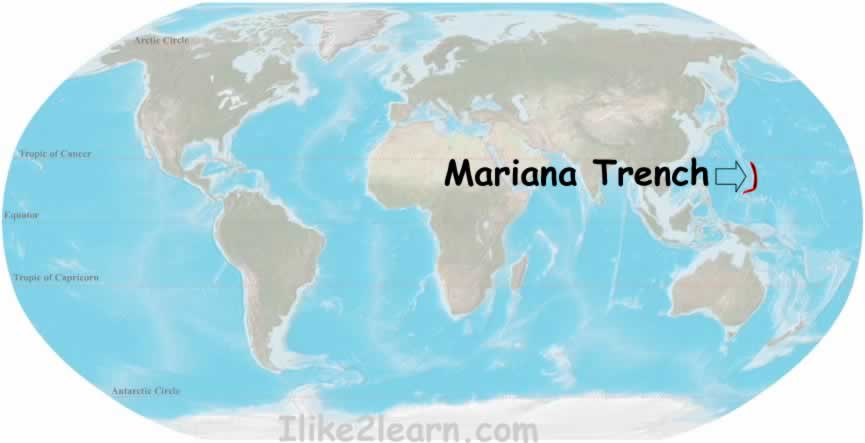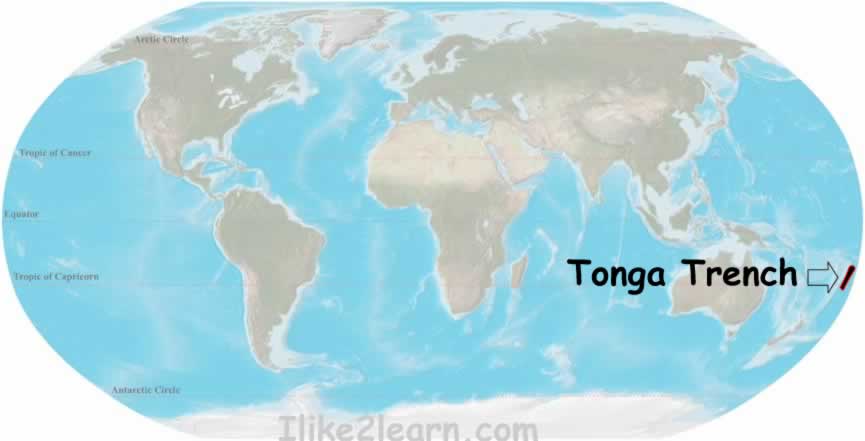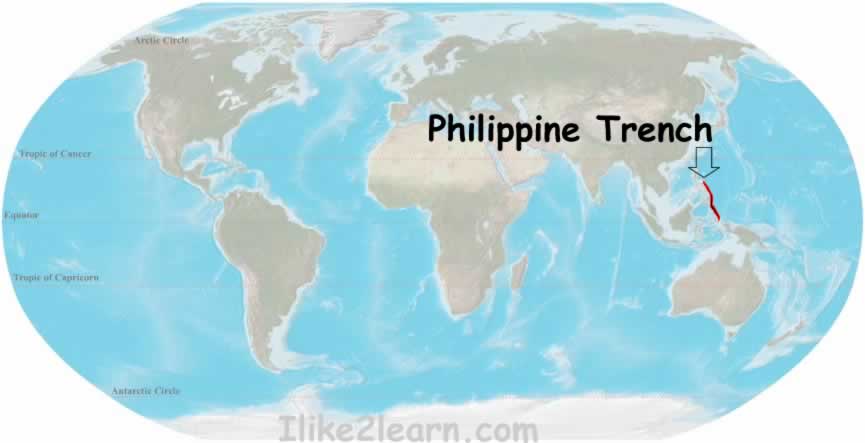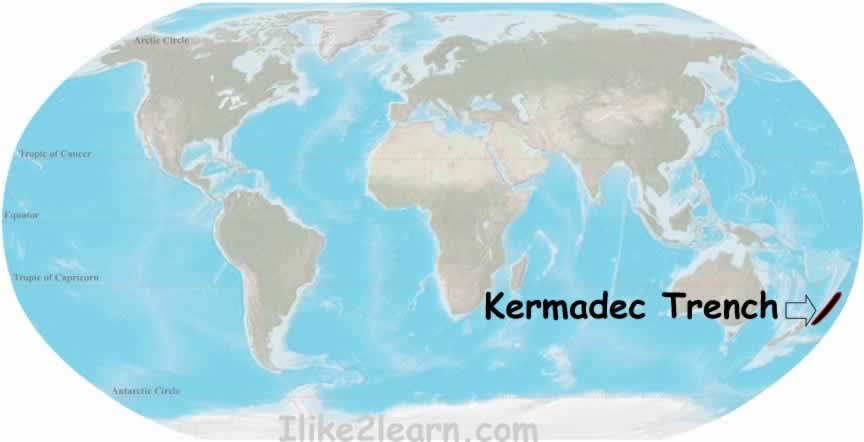1. Mariana Trench - Pacific Ocean





The Mariana Trench is the deepest part of the world's oceans, and the lowest elevation of the surface of the Earth's crust. It is located in the western Pacific Ocean, to the east of the Mariana Islands. The trench is about 2,550 kilometres (1,580 mi) long but has a mean width of only 69 kilometres (43 mi). It reaches a maximum-known depth of about 11.03 kilometres (6.85 mi) at the Vityaz-1 Deep and about 10.91 kilometres (6.78 mi) at the Challenger Deep, a small slot-shaped valley in its floor, at its southern end. If Mount Everest, the highest mountain on Earth at 8,848 metres (29,029 ft), were set in the deepest part of the Mariana Trench, there would be 2,076 metres (6,811 ft) of water left above it.
2. Tonga Trench - Pacific Ocean

The Tonga Trench is located in the South Pacific Ocean and is 10,882 meters (35,702 ft) deep at its deepest point, known as the Horizon Deep.
The trench lies at the northern end of the Kermadec-Tonga Subduction Zone, an active subduction zone where the Pacific Plate is being subducted below the Tonga Plate and the Indo-Australian Plate. The Tonga Trench extends north-northeast from the Kermadec Islands north of the North Island of New Zealand. The trench turns west north of the Tonga Plate and becomes a transform fault zone.
3. Philippine Trench - Pacific Ocean

The Philippine Trench is a submarine trench to the east of the Philippines. It has a length of approximately 1,320 km and a width of about 30 km from the centre of the Philippine island of Luzon trending southeast to the northern Maluku island of Halmahera in Indonesia. Its deepest point, the Galathea Depth, has a depth of 10,540 metres (5763 fathoms or 34,580 feet).
Immediately to the north of the Philippine Trench is the East Luzon Trench. They are separated, with their continuity interrupted and displaced, by Benham Plateau on the Philippine Sea Plate.
The Philippine Trench is the result of a collision of tectonic plates. The Philippine Sea Plate is subducting under the Philippine Mobile Belt at the rate of about 16 cm per year.
4. Kuril–Kamchatka Trench - Pacific Ocean


The Kuril–Kamchatka Trench or Kuril Trench is an oceanic trench with a maximum depth of 10,542 metres (34,587 ft). It extends from a triple junction with the Ulakhan Fault and the Aleutian Trench to the north, to the Japan Trench to the south.
The trench formed as a result of the subduction zone, which formed in the late Cretaceous, that created the Kuril Islands island arc as well as the Kamchatka volcanic arc. The Pacific Plate is being subducted beneath the Okhotsk Plate along the trench, resulting in intense volcanism.
5. Kermadec trench - Pacific Ocean

The Kermadec trench is one of Earth's deepest oceanic trenches, reaching a depth of 10,047 metres (32,963 ft). Formed by the subduction of the Pacific Plate under the Indo-Australian Plate, it runs over a thousand kilometres parallel with and to the east of the Kermadec Ridge and island arc, from near the northeastern tip of New Zealand's North Island to the trench's junction with the Louisville seamount chain northeast of Monowai Seamount. The Tonga Trench marks the continuation of subduction beyond this point. Subduction south of the Kermadec trench is marked by the shallower Hikurangi Trench.

